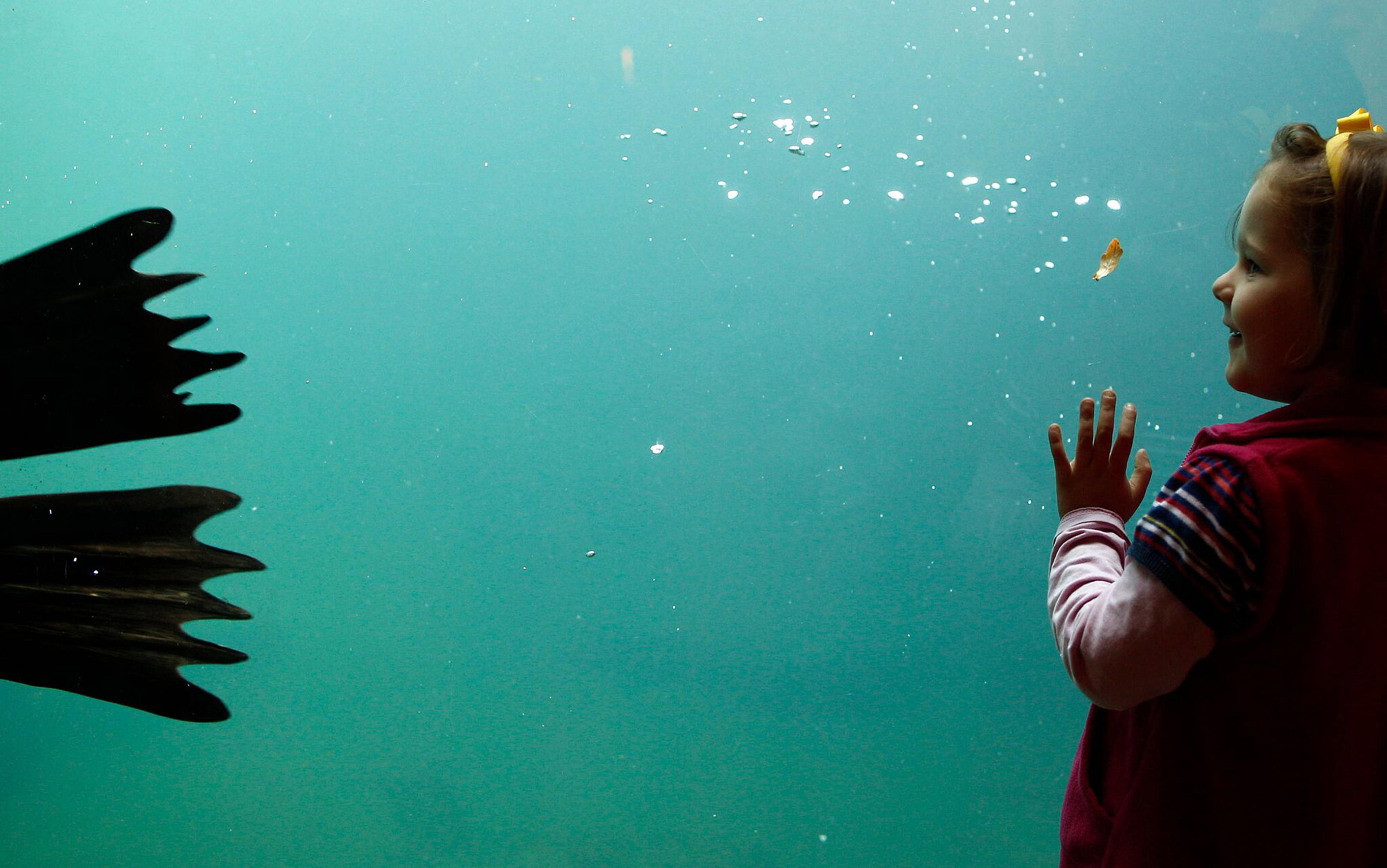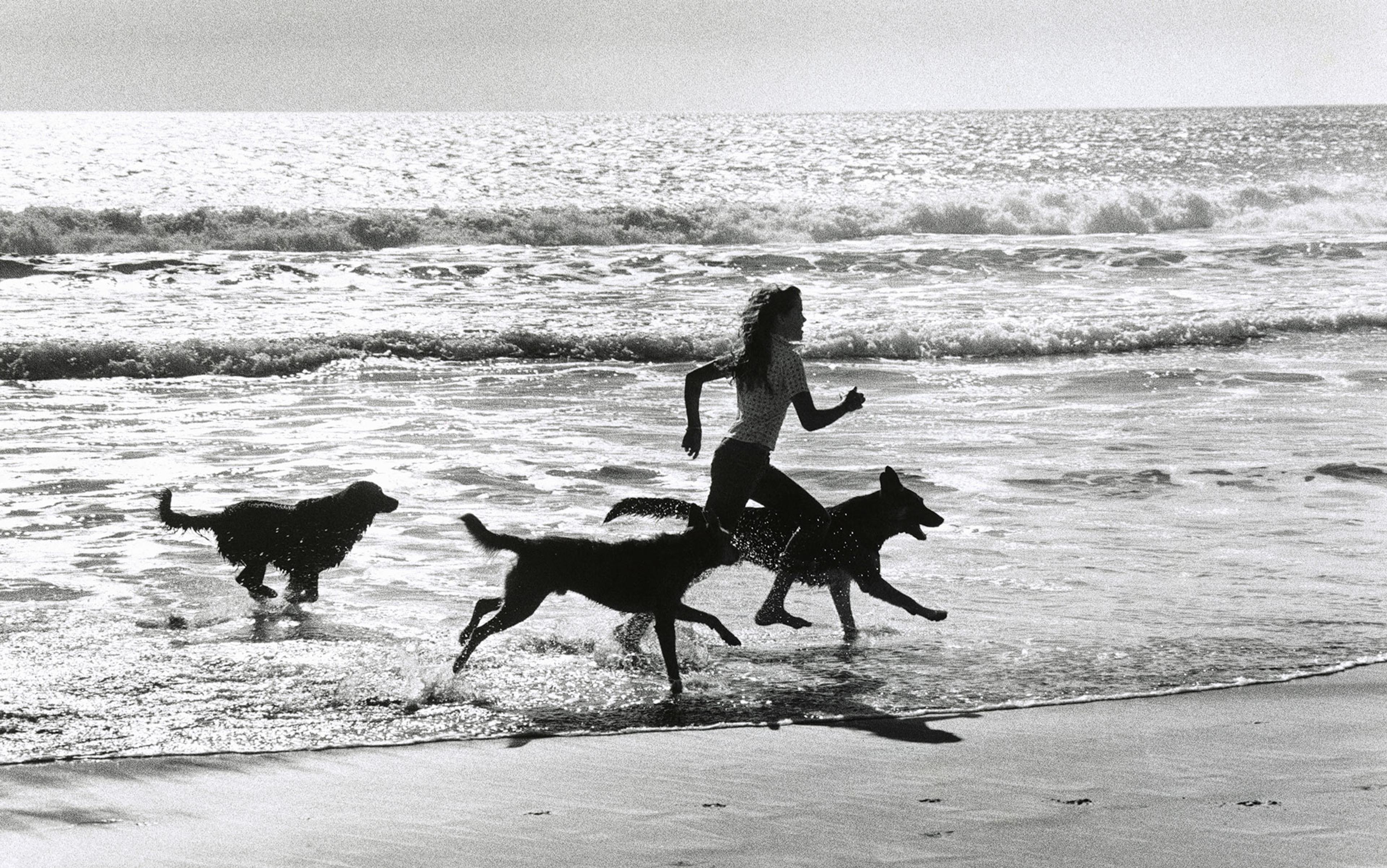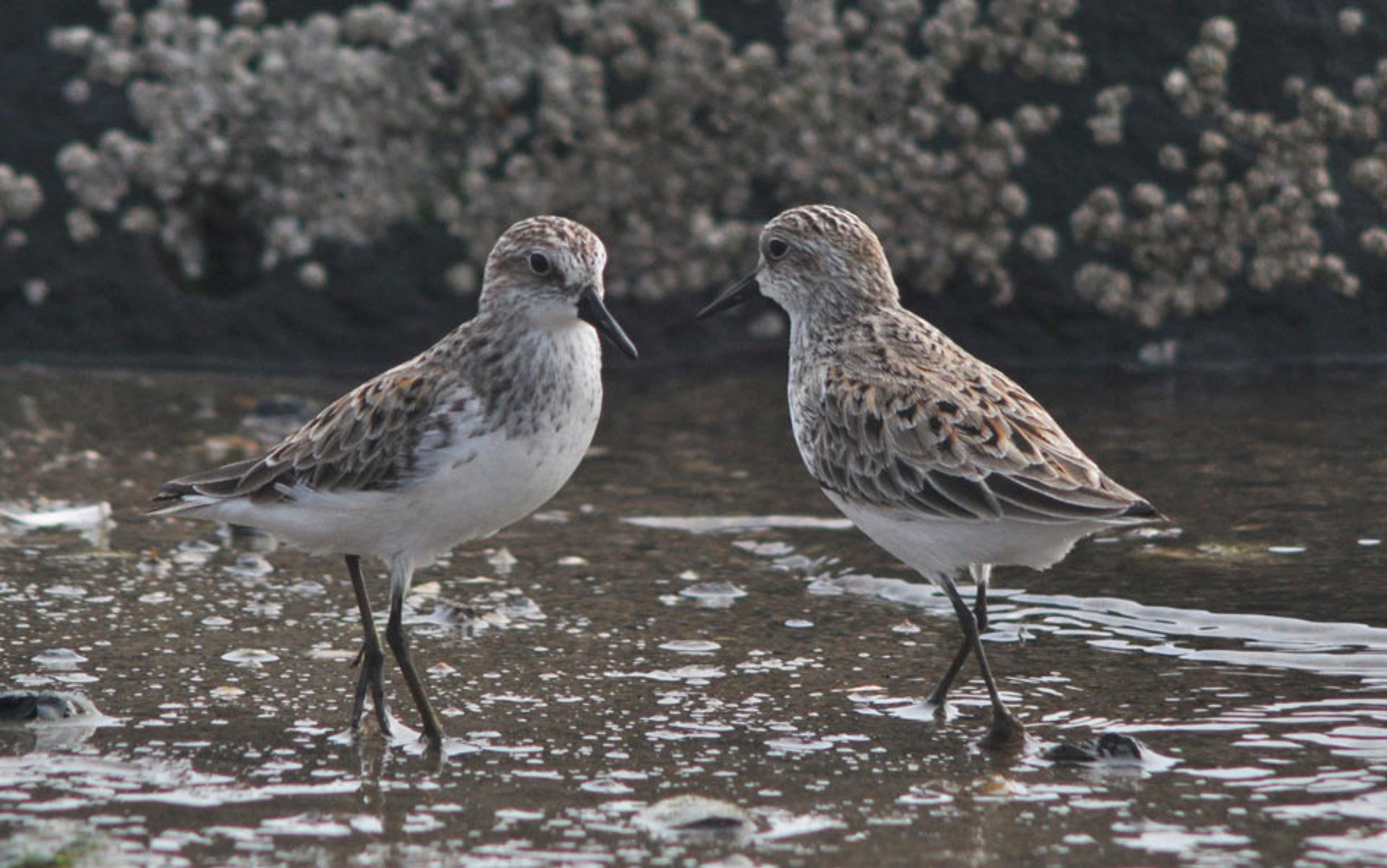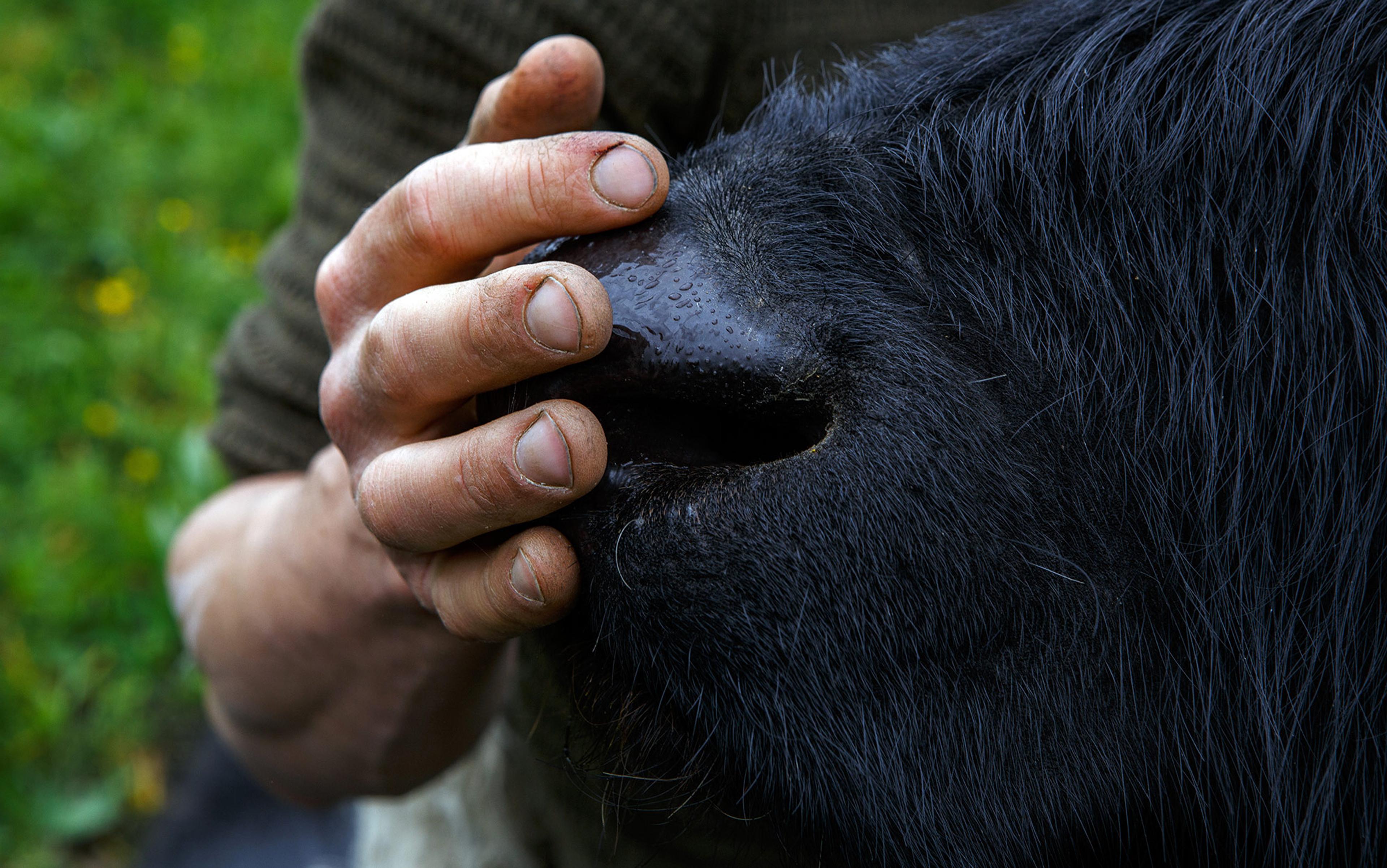I like zoos. Really I do. I applaud today’s zoological parks for their increasing emphasis on naturalistic exhibits, their breeding programmes for endangered species, and their efforts to educate the public about wildlife conservation. But the truth is, I mainly like zoos for the same reason that other people do: because I love watching animals.
Animals in captivity might satisfy our desire to cross the existential barrier that separates us from other creatures. Yet the sad reality is that, for the most part, zoo animals have become, as the art critic John Berger put it in 1977, ‘a living monument to their own disappearance’. The greatest pleasure of animal-watching still comes from observing free-living creatures in their natural environment. With enough disposable income, you can go to India, South America or Antarctica on animal-watching trips, ‘bag’ a view of the African ‘Big Five’ (elephant, rhino, lion, leopard, and buffalo), or take a boat to admire great whales exhaling geysers of salty breath.
The wild animals of the world have long inhabited the depths of the human imagination no less than they have occupied the natural habitats of our shared planet. There isn’t a human society on Earth, however primitive or high-tech, that doesn’t concern itself with animal imagery, whether the critters are domesticated or free-living. Indeed, the human fascination with animals is so ancient and so widespread that it seems to be a cross-cultural human universal.
The Chauvet Cave in southern France contains careful, loving depictions – painted an estimated 34,000 years ago – of more than a dozen distinct animal species: predators such as cave bears, cave lions and dire wolves, as well as herbivores such as cattle, horses and mammoths. There is at least one pair of woolly rhinos, evidently fighting.
In our culture, animals loom large in children’s stories, not to mention as toys, clothing, even furnishings. But many adults in urban areas and/or technologically advanced societies lose much of their animal-interest as a concomitant of ‘growing up’.
Most likely, ‘growing up’ in this sense is itself a deformation of our deeper, animal-oriented human nature. It is imposed upon us by a world where transportation is by car, bus, train and airplane, rather than by horse or bullock-cart. We receive meat and milk from a store rather than from our own flocks or hunting efforts; we defend ourselves with electronic protection systems, the police, personal firearms or social convention rather than via warnings uttered by semidomesticated camp followers. For many of us, it’s simply difficult to keep or even perceive other animals in the urban jungle. Yet, even as we are increasingly distanced from real animals, we find ourselves confronted with ever more images of them, cartoonish perhaps, but unavoidable.
The popularity of pets, animal films, TV shows, and books suggests that interaction with animals derives from a deeply rooted human need. Recent findings that companion animals contribute positively to many people’s physical and emotional health do not in themselves explain why animals exert such effects; rather, they suggest that animals (at least, some species) have long been associated with human well-being. The same goes for the simple pleasures so many of us derive from observing and interacting with animals. ‘Pleasure’ is not something that natural selection doles out without a reason – and we would expect that reason to be intimately connected with maximising fitness. When it comes to evolution, pleasure is deployed as bait as much as for immediate reward. The question then is simply this: what do people get from their animal-watching? And can evolution help explain this powerful yearning to observe other creatures?
The science of why so many of us watch animals still remains largely unexplored. One of my earliest research projects as a graduate student in zoology at the University of Wisconsin was titled ‘Who Watches Who at the Zoo?’ I sat in front of a naturalistic exhibit of a family group of lion-tailed macaque monkeys (adult male, adult female, a juvenile and an infant) and pretended to watch them while, in fact, recording the conversations among zoo visitors about the monkeys. The results were quite clear: men focused on the ‘other’ adult macaque male (‘Look at that big guy!’), women paid particular attention to the adult female, as well as the infant (‘Look, honey, there’s the mommy and her baby!’), while children looked especially at their simian counterpart (‘How cute, there’s a tiny little monkey!’). One plausible explanation is that people, at least some of the time, look at animals – non-human primates in particular – as reflections, albeit distorted, of themselves.
This is true across many cultures: animals are widely – perhaps universally – used to signify various human ‘types’, such as the trickster, the wise one, the diligent worker, the brave warrior, etc. Victorian society, especially after Charles Darwin, was typically disconcerted by the obvious similarities between human beings and various non-human primates. ‘Descended from monkeys?’ the wife of the Bishop of Worcester was reported to have exclaimed in 1860. ‘Let us hope that it is not true. But if it is true, let us hope that it doesn’t become widely known!’
Well, it is true, and widely known, at least among those not benighted by religious fundamentalism. So urban (and urbane) an observer as the German philosopher Walter Benjamin noted the potential for mutual recognition between human and animal, with results not altogether different from those of the Bishop’s wife. ‘In an aversion to animals,’ he wrote in 1928, ‘the predominant feeling is fear of being recognised by them through contact. The horror that stirs deep in man is an obscure awareness that in him something lives so akin to the animal that it might be recognised.’ But horror isn’t the typical response to looking at animals. I’m probably somewhere on the abnormally obsessive tail of the normal curve when it comes to enthusiasm for watching animals. But I’m definitely not alone when it comes to deriving delight just from seeing other living creatures, especially free-living ones.
we are living, breathing, perspiring, seeing, hearing, smelling, touching, eating, defecating, urinating, copulating, child-rearing, and ultimately dying animals ourselves
Berger has lamented that ‘the look between animal and man’ – a cross-species connection that might have played a crucial role in the development of human society – has been extinguished by our loss of contact with living animals in industrial society. I’m not so sure. Urban wildlife is actually fairly abundant, although species diversity is regrettably lacking: there are pigeons, rats, cockroaches, and – depending on location – various kinds of gulls. Coyotes and raccoons are surprisingly frequent even in our great cities, but they aren’t typically seen. Even in urban India, there really are sacred cows (usually emaciated and pitiable) and macaque monkeys that are sometimes downright dangerous. Birdwatching is a well-populated hobby that is generally doing better than the birds themselves. And visits to zoos and aquariums are up, as the standards of animal-keeping in such places are also better than ever. What used to be concrete floors and iron bars are increasingly replaced by naturalistic habitats, in which the animals sometimes breed, occasionally lead semi-normal lives, and provide visitors (still disproportionately skewed toward children) an opportunity to watch the animals, perhaps stirrings some universal human neurons dating back to our lengthy sojourn on the African savannah.
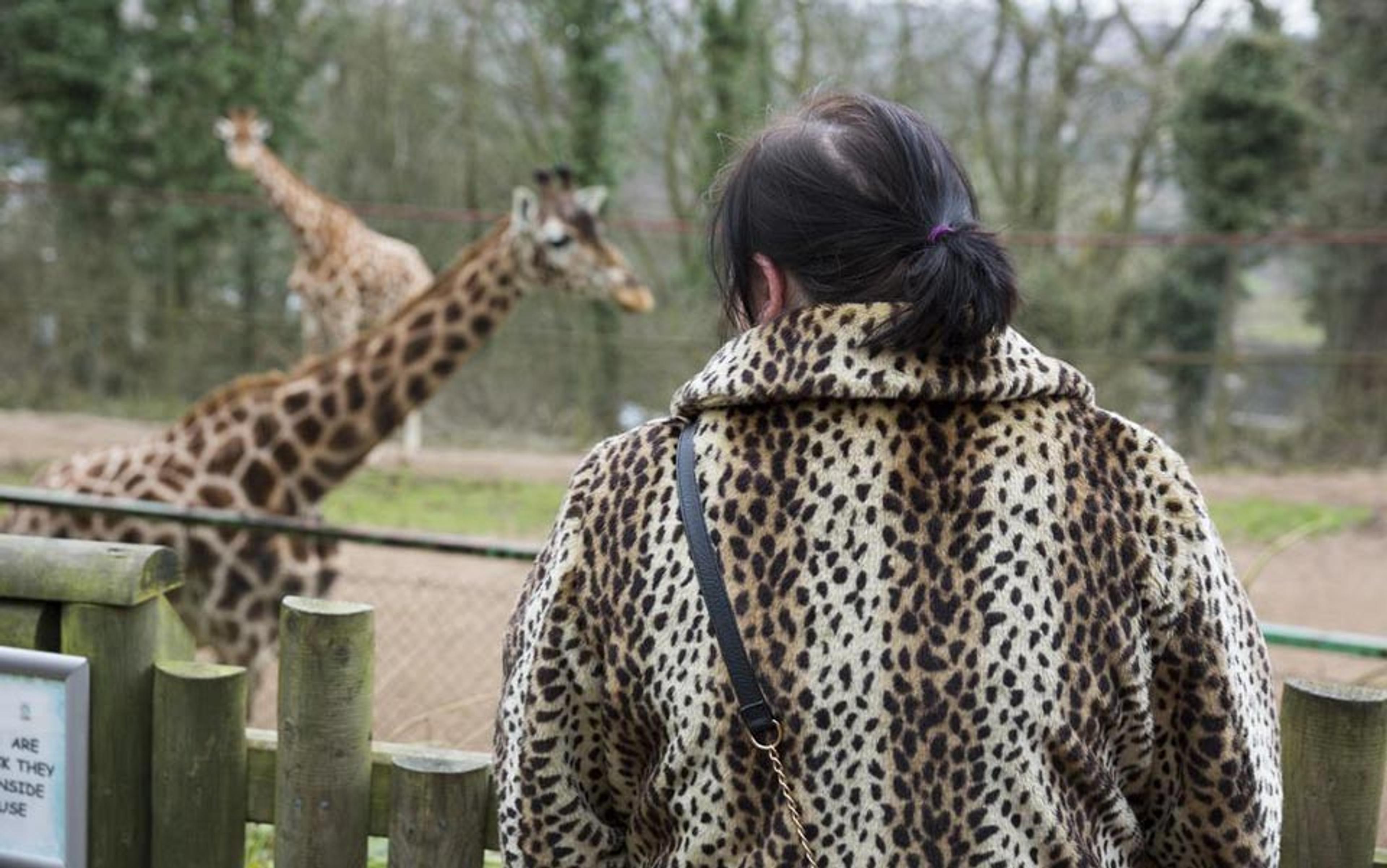
A visitor at Dudley Zoo in England, 2013. Photo by Martin Parr/Magnum
This suggests some of the evolutionary underpinnings of the human penchant for animal-watching. First, that we are living, breathing, perspiring, seeing, hearing, smelling, touching, eating, defecating, urinating, copulating, child-rearing, and ultimately dying animals ourselves. It is plausible that deep in the human psyche there resides the simple yet profound recognition of a relationship between Us and Them. ‘We be of one blood, ye and I,’ was the incantation taught to Mowgli in Rudyard Kipling’s memorable Jungle Book collections (1894-5). It confirmed the jungle boy’s connection with his non-human caretakers, friends and relatives. Perhaps it is ‘only natural’ that we, animals ourselves, reach out to other creatures. Even if we can’t talk to them à la Doctor Dolittle, or share the most intimate aspects of our lives, like Mowgli, at least we can lose – more likely, find – ourselves in watching them.
What is more, during most of our evolutionary (and recent) past, our well-being – survival, even – depended on relationships to other animals, many of which were predators, with us as their prey. This alone would have generated a potent selective advantage to those of our ancestors who were attuned to the presence as well as the habits of other beasts, especially large and dangerous ones such as sabre-toothed cats, cave bears, dire wolves, hyaenodons and the like – suggesting that behind Benjamin’s ‘horror’ and ‘aversion’ lurks something less highfalutin than the epistemics of ego-deflating mutual recognition: self-preservation.
Thus, it might be no coincidence that people are especially attuned to the doings of predators. As Dorothy said in The Wizard of Oz: ‘Lions and tigers and bears, oh my!’ Sometimes, of course, this attentiveness is more a fear than a fascination; in his book Snakes, Sunrises, and Shakespeare (2014), the ecologist Gordon Orians points out that, cross-culturally, people share an innate fear of snakes and spiders, whereas avoidance of, for example, electric sockets must be learnt.
Conversely, whether as occasional predators or scavengers – or both – our ancestors doubtless preyed upon other animals, and this would have selected for attentiveness to what possible meals might be had at the expense of our fellow creatures, a focus that would have included sensitivity to what was nearby, where they could be found, and how they might best be approached. Careful animal-watching would have thus been doubly rewarded: not only rendering us less liable to end up as prey but also more likely to feed successfully on others.
Given the antiquity of domestication – including, but not limited to, dogs – it is clear that early humans also depended on various ‘kept’ animals as beasts of burden, sources of eggs, milk, meat, and so forth, as well as perhaps employing them as colleagues in hunting, early warning detectors sensitive to the approach of enemies, even providing warmth – not only via their skins and fur, but also their literal bodies, cuddling closely with our Pleistocene ancestors during those long, challenging Ice Age nights.
There are many ways of looking at animals. A veterinarian looks for signs of illness versus health. A city-dweller might well look with fascination at red-tailed hawks or peregrine falcons nesting on a ledge of a high-rise building, but with indifference at their pigeon prey (‘winged rats’), not to mention horror at cockroaches or actual four-legged, long-tailed rats. A cat can, ostensibly, look at a king and presumably vice versa, but we are not supposed to look a gift horse in the mouth. (By the way, as a long-time horse-keeper, I can affirm that there is no such thing as a gift horse, since our equine cousins require hay, vitamins, hoof care, immunisations and regular veterinary attention. Therefore, by all means, look in the mouth of any proffered horse!) A hunter looks at her prey with a mixture of excitement, hard-eyed calculation and determination; the wildlife photographer eyes his subject in a manner not altogether different.
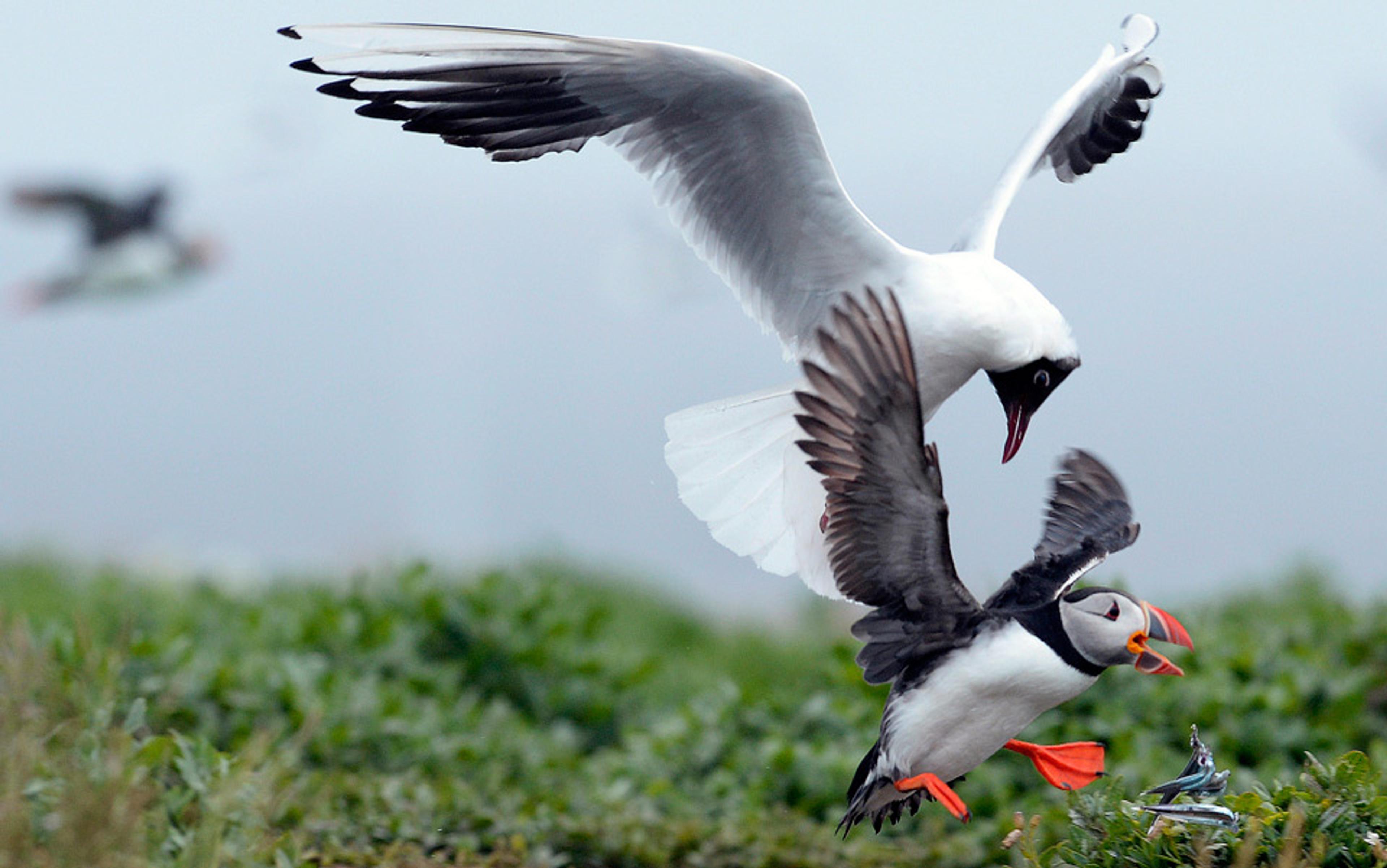
Watch the birdy. Photo by Nigel Roddis/Reuters
But for sheer pleasure, there is little doubt that watching birds tops the list. Despite their dinosaur origins (which means that our most recent common ancestor was a Carboniferous-era reptile, from roughly 300 million years ago), birds are the most assiduously watched wild animals and for good reason: many of them are fantastically lovely, brightly coloured or gloriously iridescent. Mammals, sad to say, are comparatively drab, not surprising given that birds have colour vision whereas most mammals – with the notable exception of primates such as ourselves – see only shades of grey or brown. In addition (and I say this as not only a fellow mammal but as one whose main empirical research has involved mammals), birds are more vibrant, more alive, and thus more rewarding to watch than are our closer, hair-bearing, milk-making kin, and much more so than amphibians or reptiles, which might well frustrate the watcher by doing absolutely nothing, for minutes – even hours – at a time.
‘Hope,’ observed the poet Emily Dickinson, ‘is the thing with feathers’
Even when they aren’t flying, darting, soaring, walking, dabbling, paddling, or hopping about, birds are rewarding to watch. ‘The invariable mark of wisdom,’ wrote Ralph Waldo Emerson in 1836, ‘is to see the miraculous in the common.’ Consider some of the more ordinary North American birds: the shimmering green head of a mallard drake, the delicate upturned bill of an avocet, the knockout gorgeous motley of the painted bunting. Such precisely defined shape and colour can be almost too much to register dispassionately. When it comes to watching birds – and really seeing them – even the ‘common’ emerges as more than miraculous, or downright shocking. Seeing can be disbelieving.
Seeing the comical red-white-and-black clown-face of a European goldfinch – really seeing it, not just absent-mindedly noting its existence and maybe jotting it down on a checklist – challenges our sense of the mundane. As does the ethereal, ghostly whiteness of a snowy owl, or for that matter, the gleaming coat and bright yellow bill of a starling (a troublesome species, introduced from the UK and which we in North America are supposed to despise because they crowd out native species), or the trim, forked tail of a barn swallow. These perceptions challenge our sense of the mundane. And to see such animals – ‘ordinary’ only to the jaded and obtuse – is to experience a new appreciation for reality itself, since their vitality not only mirrors but magnifies our own. ‘Hope,’ observed the poet Emily Dickinson in 1891, ‘is the thing with feathers.’
This seeing – real seeing – of animals has inspired a dizzying world of artistic creativity, in a line that leads from the Chauvet Cave paintings through to the Lady and the Unicorn tapestries of the Middle Ages, and including John James Audubon’s bird portraits as well as Henri Rousseau’s haunting painting The Dream (1910). The poet too can be a deeply passionate observer, as in Christopher Smart’s 18th-century poem ‘Jubilate Agno’. Written in a religious fervour while he was imprisoned as a madman, it starts with a litany of animals before declaring an exuberant admiration for Smart’s cat, Jeoffry:
For he counteracts the powers of darkness by his electrical skin and glaring eyes.
For he counteracts the Devil, who is death, by brisking about the life.
For in his morning orisons he loves the sun and the sun loves him.
For he is of the tribe of Tiger.
…
For he is a mixture of gravity and waggery.
…
For there is nothing sweeter than his peace when at rest.
For there is nothing brisker than his life when in motion.
…
For the divine spirit comes about his body to sustain it in complete cat.
Perhaps my favourite animal poem is by Rainer Maria Rilke. The story goes that in 1905 Rilke had been hired by the sculptor Auguste Rodin as his amanuensis, but one day confessed that he was suffering from writer’s block. Rodin advised: ‘Go to the zoo [actually, Paris’s Jardin des Plantes], and observe an animal.’ ‘For how long?’ asked the young poet. ‘Watch it until you see it. A few months might be sufficient.’ Rilke followed this advice, and eventually produced what is generally considered his greatest poem: ‘The Panther’.
One thing I love about this story (as well as about the poem itself), is that it speaks to the difference between the scientific discipline in which I was trained as a graduate student (ethology) and a competing, and in my opinion, far lesser scientific enterprise (comparative psychology). Comparative psychology’s approach to studying animals traditionally takes place in a laboratory and involves placing individuals from a limited range of animal species – usually lab rats or pigeons – in a Skinner Box, with the goal of observing some measure of output: frequency of bar-pressing, latency to begin doing so, and so forth. It certainly does not entail watching the animal itself, once its behaviour has been appropriately ‘shaped’, or it has learnt what the experimenter wants it to do. By contrast, ethology – the biological study of animal behaviour – requires that animals be observed whenever possible in their natural environments (if unavoidable, in a simulacrum). Most of all, ethology insists that they are observed rather than being measured while performing an arbitrary, imposed act such as bar-pressing. For this, even a few months are never sufficient.
Ethology is the scientific version of good, old-fashioned animal-watching. Thus, although the immense renown achieved by the primatologist Jane Goodall, one of the giants of ethological research, was largely due to her notable discoveries, the reality is that these findings were only possible because she spent literally thousands of hours observing chimpanzees in their natural environments, carefully watching their every move.
At ethology’s core is Rodin’s and Rilke’s deep, mindful, detailed and patient observation, watching one’s subjects with exquisite care and attention in order to penetrate their world, rather than forcibly adjusting them to ours. The naturalist Henry Beston captured this in 1928, in what I believe to be the finest paragraph ever written about animals, and the best advice I know for watching them:
We need another and a wiser… concept of animals. Remote from universal nature and living by complicated artifice, man in civilisation surveys the creature through the glass of his knowledge and sees thereby a feather magnified and the whole image in distortion. We patronise them for their incompleteness, for their tragic fate for having taken form so far below ourselves. And therein do we err. For the animal shall not be measured by man. In a world older and more complete than ours, they move finished and complete, gifted with the extension of the senses we have lost or never attained, living by voices we shall never hear. They are not brethren, they are not underlings: they are other nations, caught with ourselves in the net of life and time, fellow prisoners of the splendour and travail of the earth.
My advice to all would-be animal-watchers is, in E M Forster’s words ‘only connect… live in fragments no longer’. Simply open your eyes, ideally with benefit of binoculars, to the reality of animal lives separate from your own. Prepare to lose yourself in one of the most positive ‘trips’ available this side of hallucinogenic drugs, drawn through the lenses and deposited into the world of the animal being watched, losing yourself while expanding – however briefly – into another’s life, resonant of your own, while also ineffably different.
‘There is a crack in everything,’ sang Leonard Cohen. ‘That’s how the light gets in.’ Watching animals opens that crack just a little wider, and through it we get a better view – not only of animals, but of ourselves.
